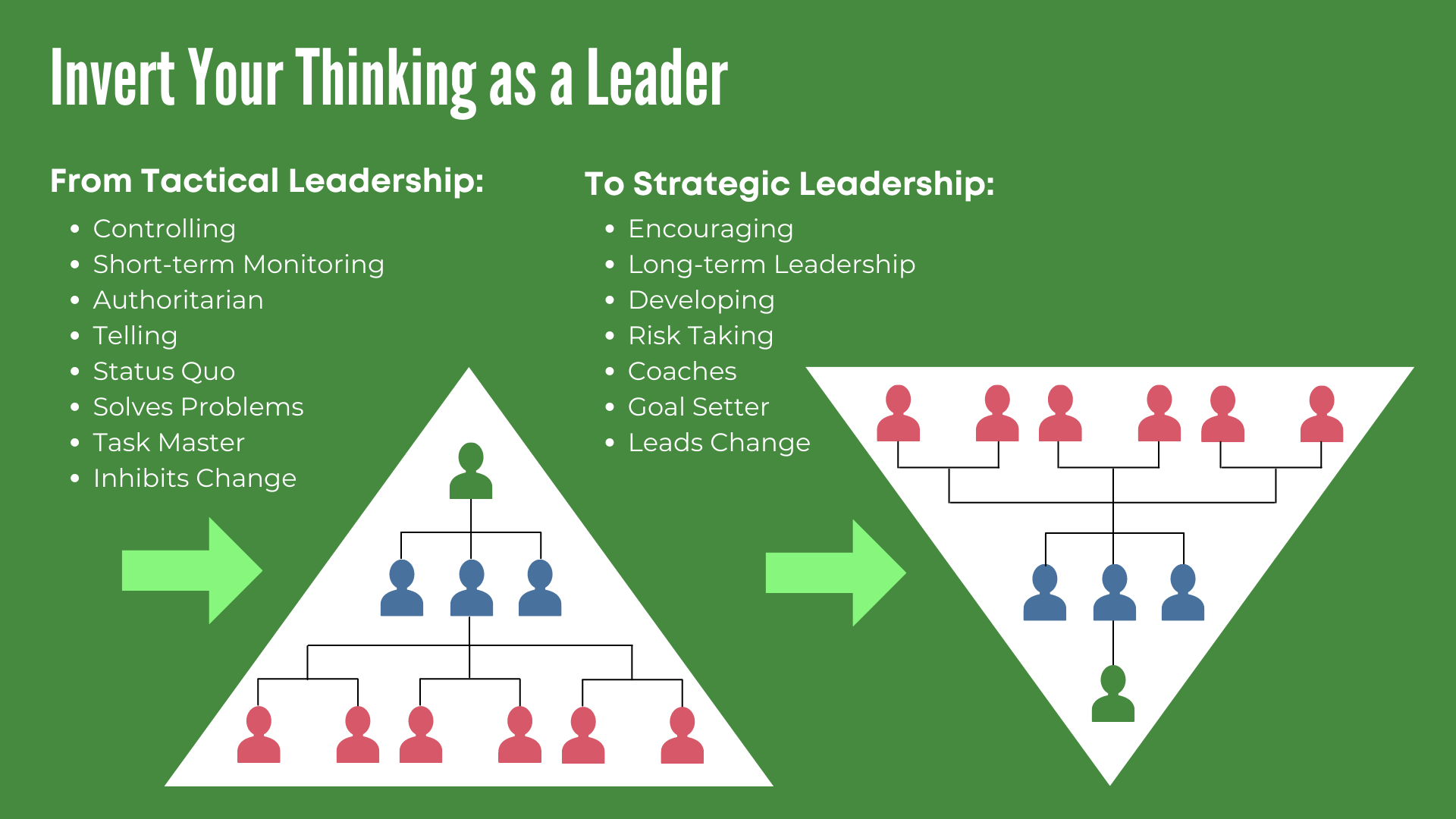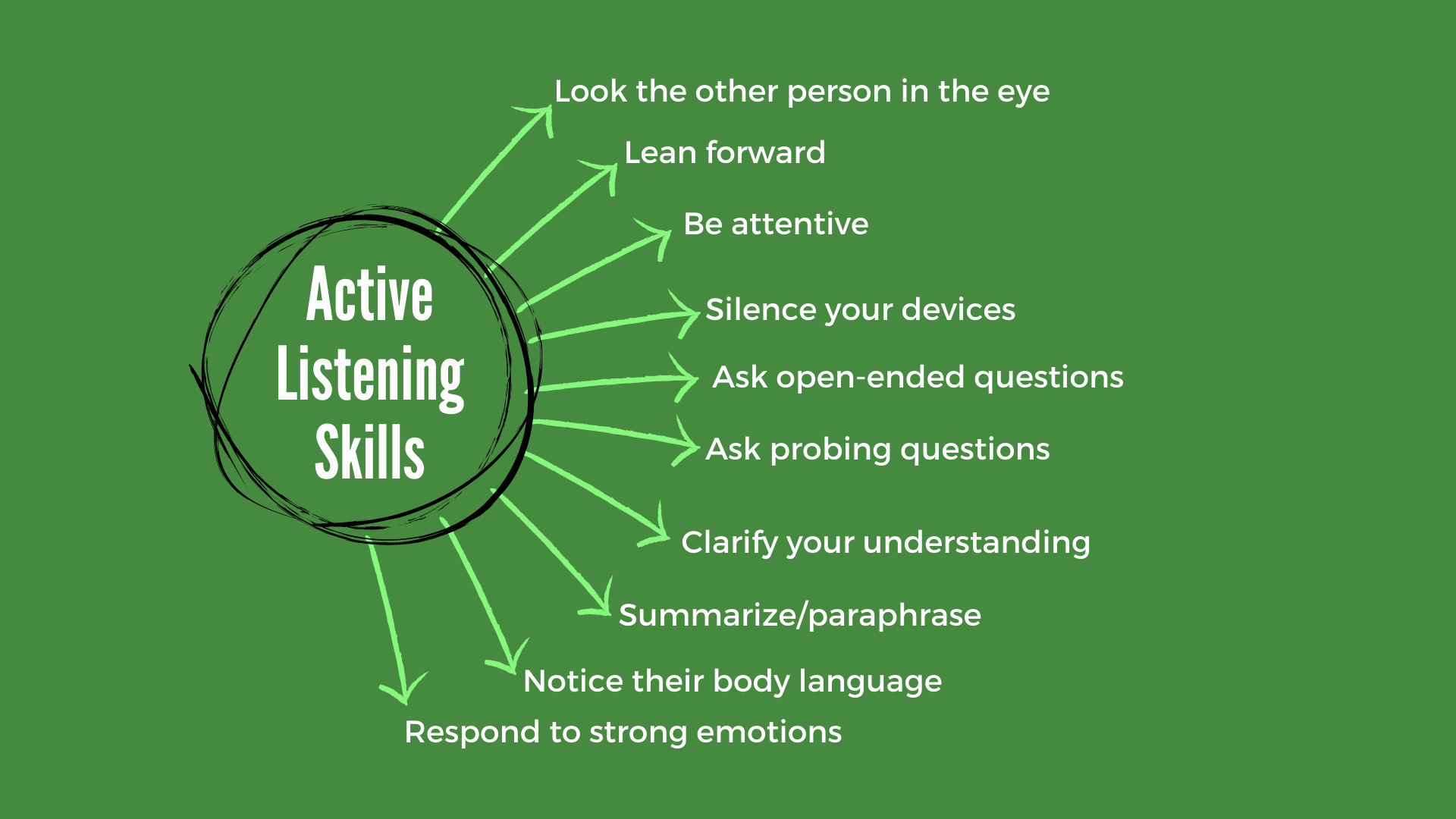When people lead at a higher level, they make the world a better place, because in addition to results and relationships, their goals are focused on the greater good.
—Ken Blanchard and Renee Broadwell
 Everyone likes to talk about leadership: they want more of it, and they want to learn how to do it well. Because you’re a reader of this blog (which frequently addresses leadership-related issues), I’m guessing you have some interest in leadership yourself.
Everyone likes to talk about leadership: they want more of it, and they want to learn how to do it well. Because you’re a reader of this blog (which frequently addresses leadership-related issues), I’m guessing you have some interest in leadership yourself.
Traditional Leadership versus Servant Leadership
The goal of many leaders is to get people to think more highly of the leader. The goal of a great leader is to help people to think more highly of themselves.
—J. Carla Nortcutt
People define leadership in numerous different ways. “Leadership is the accomplishment of a goal through the direction of human assistants,” wrote W.C.H. Prentice. In a similar vein, Kevin Kruse describes it as “a process of social influence, which maximizes the efforts of others, towards the achievement of a goal.”
These are just a few of the many (many!) definitions out there. Regardless of which specific words are used, however, understandings of leadership often focus on the relationship between one person (the leader) and some collective body (such as a company or a political body, for example). Usually the emphasis is on how that person can use their skills and personality to inspire and motivate others (employees) to help the organization achieve its goals, as this definition from Susan Ward illustrates:
Leadership is the art of motivating a group of people to act toward achieving a common goal. In a business setting, this can mean directing workers and colleagues with a strategy to meet the company’s needs.
These days, however, as companies compete over increasingly scarce talent resources, leaders realize that if they want to court and retain the best people, they need to demonstrate how they can help those individuals achieve their highest potential and their own professional goals.
The leader–employee relationship is no longer centered exclusively on “what can employees do for their leaders and the organization?” but instead includes space for “what can leaders do for their employees?”—that is, servant leadership.
The term servant leadership first appeared in Robert Greenleaf’s 1970 essay “The Servant as Leader.” In this work, which launched the servant leadership movement, Greenleaf (a management and business ethics expert) wrote:
[Servant leadership] begins with the natural feeling that one wants to serve, to serve first. Then conscious choice brings one to aspire to lead. That person is sharply different from one who is leader first, perhaps because of the need to assuage an unusual power drive or to acquire material possessions. . . . The difference manifests itself in the care taken by the servant-first to make sure that other people’s highest priority needs are being served. The best test, and difficult to administer, is: Do those served grow as persons? Do they, while being served, become healthier, wiser, freer, more autonomous, more likely themselves to become servants? And, what is the effect on the least privileged in society; will they benefit, or, at least, not be further deprived?
As Larry Spears, the former president and CEO of the Robert K. Greenleaf Center for Servant-Leadership, explains, this view of leadership “emphasizes increased service to others; a holistic approach to work; promoting a sense of community; and the sharing of power in decision making.” 1
 Since 1970 the concept of servant leadership has been tweaked by many people, but the general gist of it has remained steady. Servant leadership is frequently pitted against so-called traditional leadership, with the two styles usually described as being very different from each other, as one leadership expert explains:
Since 1970 the concept of servant leadership has been tweaked by many people, but the general gist of it has remained steady. Servant leadership is frequently pitted against so-called traditional leadership, with the two styles usually described as being very different from each other, as one leadership expert explains:
The main focus of a traditional leader is to improve the business position of the company or the organization in the market. . . . A servant leader focuses on the people that are directly below them, rather than the company as a whole.
Another leadership expert spells out the main characteristics of servant leadership that differentiate it from traditional leadership:
- A servant-leader’s focus is primarily on other people’s (and their communities’) well-being and growth.
- The servant-leader isn’t a sole leader with power, but rather, a power-sharer.
- They put other people’s needs above their own and enable their team to grow, develop and perform to the best of their ability.
Putting those two focus areas in different (and sometimes diametrically opposed) camps, however, greatly reduces the scope and effectiveness of leadership. Unfortunately, too many people wrongly assume that in order for an approach to be considered servant leadership, it must focus on the employees to the exclusion of focusing on profits and the company’s goals. This perspective is both narrow and misguided.
Here’s my take: in servant leadership, serving the organization and serving your people should not be mutually exclusive.
It’s all right to focus on company results while at the same time helping your employees to be successful. An employee’s success has a direct impact on the organization’s success—and vice versa. So why wouldn’t you want to support that?
Because an employee’s success is defined in large part by their own personal standards, leaders should help employees develop the skills that interest them. Under a “traditional” leadership framework, a leader might insist that employees stay put and develop the skills that the company needs them to have. In servant leadership, the focus is on helping employees grow how and where they want.
Yes, employees still have to perform in ways that benefit the organization. But someone who fully embraces a broader view of servant leadership will not shy away from developing employees in areas and directions that are more aligned with their long-term goals—even if that means developing them right into a different department or team. Thus:
A servant-leader’s focus is primarily on other people’s (and their communities’) well-being and growth. . . . They put other people’s needs above their own and enable their team to grow, develop and perform to the best of their ability.
Such a leader is okay with this approach because they understand that their leadership can (and should) promote the intertwined interests of employees and companies. This perspective also has some overlap with the stakeholder capitalism approach, which regards employees as one category of stakeholders whose needs and interests are integral to an organization’s success.
A Shift in Perspective
Twenty-first-century leadership relationship dynamics are from the bottom up rather than the top down; from the outside in, rather than the inside out.
—James M. Strock
Typically, the “traditional” leadership approach emphasizes top-down authority, control of employees, and micromanagement. (After all, if the role of leaders is to direct and motivate employees to achieve the company’s goals, it makes sense to have leaders call all the shots, right?) A servant leadership approach comes at things from a different direction: it emphasizes bottom-up decision making, support for employees, and empowerment of employees to get their work done. This “flipping the pyramid” (as it’s often called) is a useful start, but its treatment of the two approaches as opposites doesn’t leave much room to explore their compatibility.
Rather than put those two structures side by side and saying, “Choose one or the other,” I propose keeping the elements of the traditional approach that keep the work moving forward in ways that support both company and employee goals, and including them in a servant leadership approach.
Creating a Culture of Servant Leadership
Leaders become great, not because of their power, but because of their ability to empower others.
—John Maxwell
Since 1970, the ten major characteristics of servant leadership that Greenleaf identified in his essay have been revised, edited, augmented, trimmed, and altered by numerous leadership experts. Keeping in mind the core principles and goals of this approach, I have developed my own list of recommended actions to take to become an effective servant-leader:
Be a great communicator. Set your employees up for success by being clear about your expectations and by being open to your employees’ concerns as well as their ideas on how to tackle challenges. Communication is critical, and here are some suggestions for how to get better at it:
- Freely share information
- Don’t gossip and hold confidences
- Understand your communication style
- Understand others’ communication styles
- Pay attention to body language
- Consider your tone
- Speak to be understood, not to posture
- Get to the point—speak concisely
- Choose your battles
- Be constructive
- Admit mistakes—don’t hide or deny them
Lastly, remember that true communication is a dialogue. So be sure you aren’t doing all the talking—you should be doing a lot of listening, too.
Empower, but don’t micromanage. Your goal as a servant leader is to ensure that your employees have the resources (such as training and advice) they need to tackle their projects. You also have the responsibility to remove significant obstacles that hinder their ability to do their jobs, while still leaving the actual task (including decision making, scheduling, and problem solving) up to them. Remember, employees learn by figuring things out on their own, not by being told how to do everything.
Develop your people—even if it means developing then out of your department (or company!). Most people want to keep building their skills. As a leader, you should definitely encourage this among your employees: research indicates that people who have learning opportunities at work are more likely to be happier at their jobs, which in turn increases their engagement and productivity.
During my time as vice president of operations at Oxygen Media, I routinely allowed my employees to spend up to eight hours each week in other departments and roles that were more aligned with their long-term career growth—a sort of “try before you buy” approach that gave them time and space to test out different career paths. Sometimes this led to one of my employees finding “greener grass” elsewhere and leaving my department. But that was a risk I was willing to take, because this practice ensured that I got the cream of the crop of employees: they knew that as their leader, I placed just as much emphasis on their individual happiness and growth as I did on my department’s (and my company’s) success, so they really wanted to be on my team.
Cultivate your emotional intelligence. People with high emotional intelligence are better at communication, conflict resolution, and relationship building—all key abilities in a leader who wants to help their employees succeed. (For more on this topic, see my two posts from last month: “Elevating Your Influence with Emotional Intelligence” and “Getting Your EQ On: How to Develop Emotional Intelligence.”)
Use feedback wisely. Don’t be afraid to give feedback, because it can be a great tool for supporting your employees. Just be sure to do so in a way that motivates and inspires—and doesn’t kill an employee’s enthusiasm or self-esteem As you give feedback, communicate clearly (once again, don’t forget to listen!) and be sure that what you say is truly in service to the employee and intended to help them.
 Create a positive culture. Employees can’t thrive and do their best work when they’re mired in a negative workplace culture. A positive environment helps reduce stress and anxiety, improve engagement and productivity, and create the conditions under which employees can be most successful.
Create a positive culture. Employees can’t thrive and do their best work when they’re mired in a negative workplace culture. A positive environment helps reduce stress and anxiety, improve engagement and productivity, and create the conditions under which employees can be most successful.
I once had a boss who routinely delivered harsh and demeaning tirades (in fact, I’m not sure he knew how to have an actual conversation!) that left people feeling demoralized. (On one occasion he told me, “I don’t know how you get up and get to the office every day”—which made me think to myself, “And I don’t know how you can possibly think you’re a decent person when you treat people like this.”) Needless to say, turnover was rampant throughout the company. However, my department had zero voluntary turnover, because I kept his poor behavior and terrible attitude away from my employees and instead created a culture of respect. Through this experience I learned an important aspect of servant leadership: be the leader you wish you had (even if your own work situation is lousy).
Final Thoughts
The first and most important choice a leader makes is the choice to serve, without which one’s capacity to lead is severely limited.
—Robert Greenleaf
Ultimately, servant leadership is about being the best leader you can be for your employees. It exists when leaders deploy certain strategies—communicating clearly, offering encouragement and development opportunities, empowering employees—that support employees in their professional journeys (and, in turn, help their organizations as well). Over the course of my management career, though, I’ve found that one of the best ways to be a servant-leader is to ask your employees “How can I be a better leader for you?” and then delivering to them what they tell you they need.
If you’ve employed any servant leadership strategies that you think are particularly helpful, please share them in the comments!
________________________


Thank you, Val! Being a leader requires allowing yourself to be vulnerable and that will look differently for each person. Your blog is helping me to develop my own plan to become a better leader.
Thanks for much for the feedback Cindy! I’m SO happy my blogs are helpful (as I SO love writing them!). And even more excited for updates on your leadership journey! Keep me updated! All the best, Val